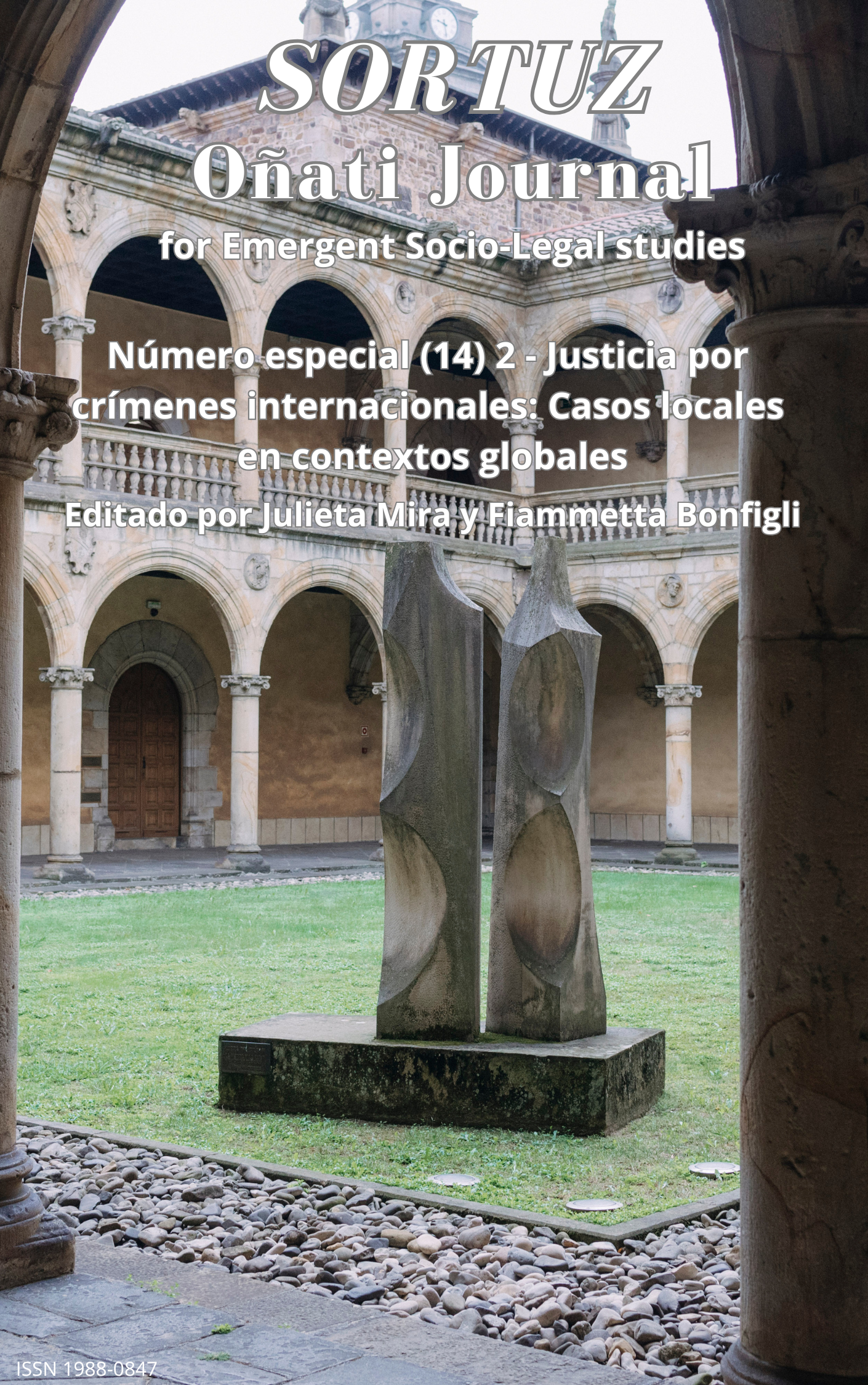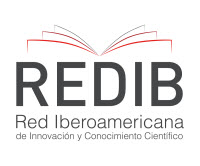Uses of digital interactive devices in trials for crimes against humanity
Keywords:
Human rights, interactive technologies, mass crimes, digital, forensic turnAbstract
The article reflects on the use of digital immersive technologies on the judicial space as long as bodies, objects and scenarios of crimes can be created/recreated, digitized and incorporated into oral audiences as proof of massacres or genocides. From the description of the use of interactive digital devices that recreate extermination centers of the Argentine dictatorship in audiences for crimes against humanity, I will question the relationship between technological resources and the production policies of truth and plausibility that enables them to participate in the judicial stage. Taking social sciences as a starting point, it is expected to show the productivity and potential of these technological resources in the field of criminal persecution, contributing to the work of jurists and justice system operators.
Downloads
Global Statistics ℹ️
|
245
Views
|
116
Downloads
|
|
361
Total
|
|
References
Artmedia, 2009. 10 años. Buenos Aires: Editorial Científica y Literaria de la Universidad Maimónides.
Barthes, R., 1990. La cámara lúcida. Nota sobre la fotografía. Barcelona: Paidós.
Becker, H., 2011. Evidencia Visual. Un séptimo hombre, la generalización especificada y el trabajo del lector. QuAderns-e, 16(1-2), 38-50.
Becker, H., 2016. Mozart, el asesinato y los límites del sentido común. Cómo construir teoría a partir de casos. Buenos Aires: Siglo XXI.
Belting, H., 2009. Antropología de la imagen. Buenos Aires: Katz.
Boltanski, L., 1999. Distant suffering. Morality, Media and Politics. Cambridge University Press.
Borisova, A., 2018. Construcción de discursos identitarios transversales en las producciones documentales colaborativas e interactivas En: J.C. Martínez, ed., VII Congreso Virtual Internacional Arte y Sociedad: arte de los nuevos medios [en línea]. Universidad de Málaga, 204-211. Disponible en: https://dialnet.unirioja.es/servlet/articulo?codigo=7734811
Burke, P., 2016. Testemunha Ocular: O uso de imagens como evidência histórica. São Paulo: UNESP.
Comisión Nacional sobre la Desaparición de Personas (CONADEP), 1984. Nunca Más. Informe de la Comisión Nacional sobre la Desaparición de Personas. Buenos Aires: EUDEBA.
Conte, G., 2015. A topography of memory: Reconstructing the architectures of terror in the Argentine dictatorship. Memory Studies, 8(1), 86-101
Dziuban, Z., ed., 2017. Mapping the ‘Forensic Turn’. Engagements with Materialities of Mass Death in Holocaust Studies and Beyond. Viena: New Academic Press.
Eilbaum, L., 2012. “Só por formalidade”: a interação entre os saberes antropológico, jurídico e judicial em um “juicio penal”. Horizontes Antropológicos, Porto Alegre, 18(38), 313-339.
Feld, C., 2010. Imagen, memoria y desaparición. Una reflexión sobre los diversos soportes audiovisuales de la memoria. Revista Altheia [en línea], 1(1). Disponible en: https://memoria.fahce.unlp.edu.ar/art_revistas/pr.4265/pr.4265.pdf
Ferrándiz, F., y Robben, A., eds., 2015. Necropolitics. Mass graves and exhumations in the age of human rights. Filadelfia: University of Pennsylvania Press.
Forensic Architecture, 2017. Hacia una estética investigativa [en línea]. Ciudad de México: MUAC Museo Universitario Arte Contemporáneo, UNAM, Insurgentes Sur. Disponible en: https://img.macba.cat/public/document/2020-01/forensic_architecture._hacia_una_estn_tica_investigativa.2.pdf
Gaudenzi, S., 2013. The interactive documentary as a living documentary Doc On-line, nº 14, pp. 9-31. Disponible en: http://www.doc.ubi.pt/14/dossier_sandra_gaudenzi.pdf
Geertz, C., 1994. Conocimiento local. Hecho y ley en la perspectiva comparativa. En: C. Geertz, Ensayos sobre la interpretación de la cultura. Barcelona: Paidós.
Keenan, T., y Weizman, E., 2014. La calavera de Menguele. El advenimiento de una estética forense. Buenos Aires/Barcelona: Sans Solei.
Langland, V., 2005. Fotografía y memoria. En: E. Jelin y A. Longoni, eds., Escrituras, imágenes y escenarios ante la represión. Buenos Aires: Siglo XXI.
Lévi-Strauss, C., 1964. El Pensamiento Salvaje. Ciudad de México: Fondo de Cultura Económica.
Magrin, N., 2015. Fotografías tomadas en Centros Clandestinos de Detención, Tortura y Exterminio en Argentina. Acerca del encuentro con imágenes de detenidos, secuestrados, desaparecidos en el Departamento de Informaciones de la Policía de la Provincia de Córdoba. Nuevo Mundo Mundos Nuevos [en línea]. Images, mémoires et sons. Disponible en: https://doi.org/10.4000/nuevomundo.68018
Pollak, M., y Heinich, N., 2006. El testimonio. En: M. Pollak, ed., Memoria, olvido, silencio: La producción social de identidades frente a situaciones límite. La Plata: Al Margen, 53-112.
Raggio, S., 2009. La noche de los lápices: Del testimonio judicial al relato cinematográfico. En: C. Feld y J. Stites Mor, eds., El pasado que miramos. Memoria e imagen ante la historia reciente. Buenos Aires: Paidós.
Sontag, S., 2005. Ante el dolor de los demás. Buenos Aires: Alfaguara.
Trucco Dalmas, A., y Carnovale, V., 2022. Los “testigos de contexto” en el Juicio por la Masacre de Trelew. El juez y el historiador. Entrevista a Vera Carnovale. Revista Políticas de la memoria [en línea], N 22. Disponible en: https://doi.org/10.47195/22.777
Turner, S., y Aslan, A., eds., sin fecha. Fotografías [en línea]. Presentación. Equipo Argentino de Antropología Forense. Disponible en: http://slideplayer.es/slide/2538/
Vecchioli, V., 2018. Usos del documental interactivo y las tecnologías transmedia en la recreación de los centros clandestinos de detención de la dictadura argentina”. Antípoda. Revista de Antropología y Arqueología, 1(33), pp. 79-100. Disponible en: https://doi.org/10.7440/antipoda33.2018.05
Weizman, E., 2014. Introduction. En: Forensic Architecture, ed., Forensis. The architectural of Public Truth. Londres: Sternberg Press/Forensic Architecture.
Zylberman, L., 2021. Un archivo insomne. El Programa Memoria Colectiva e Inclusión Social y la filmación de los juicios. Revista de la Carrera de Sociología, 11(11), 64-87.
Downloads
Published
How to Cite
Issue
Section
License
Copyright (c) 2024 Virginia Vecchioli

This work is licensed under a Creative Commons Attribution 4.0 International License.
Sortuz: Oñati Journal of Emergent Socio-Legal Studies provides immediate open access to all its content on the principle that making research freely available to the public supports a greater global exchange of knowledge.
All articles are published under a Creative Commons Attribution 4.0 International License.
Copyright and publishing rights are held by the authors of the articles. We do, however, kindly ask for later publications to indicate Sortuz as the original source.













